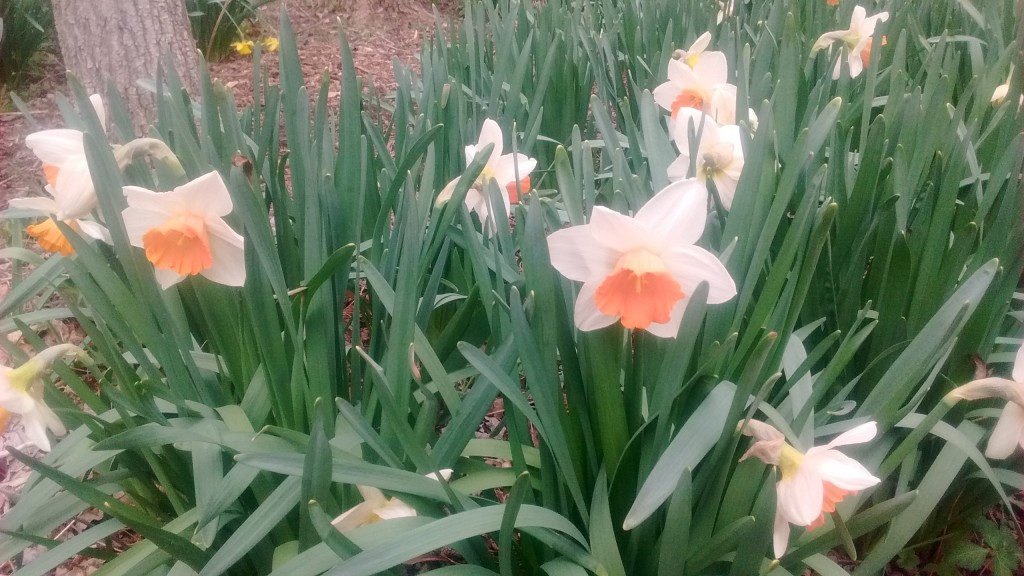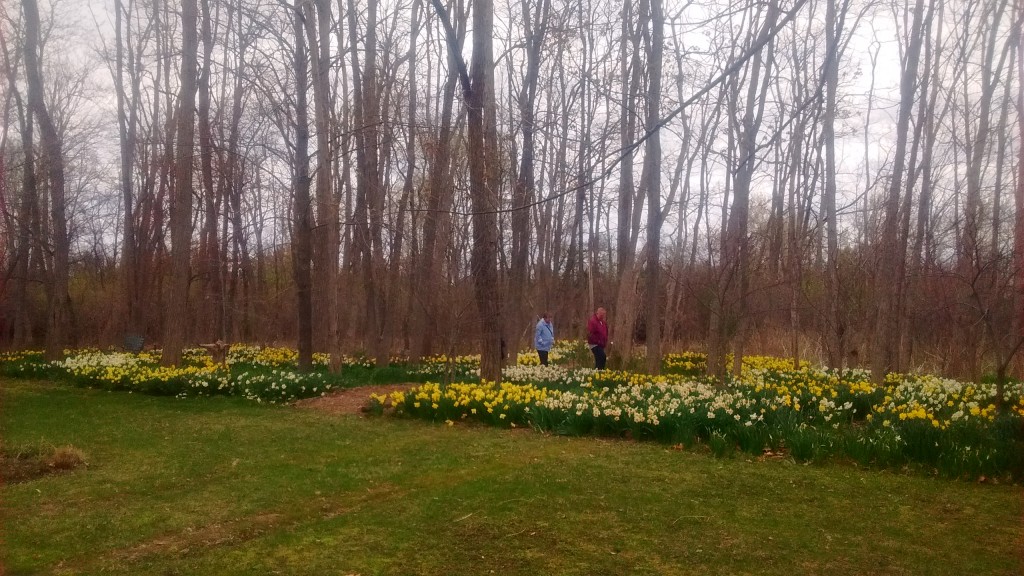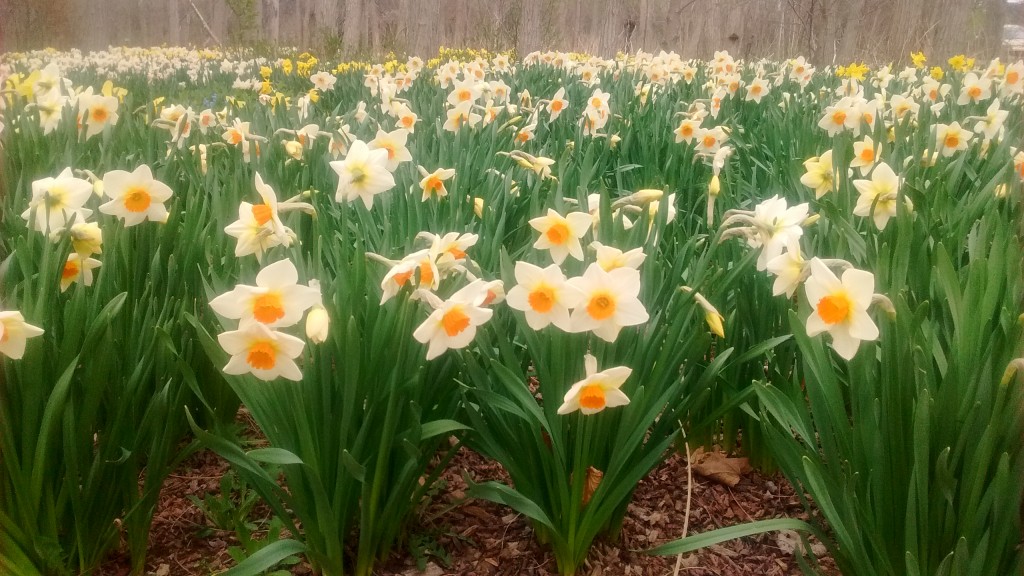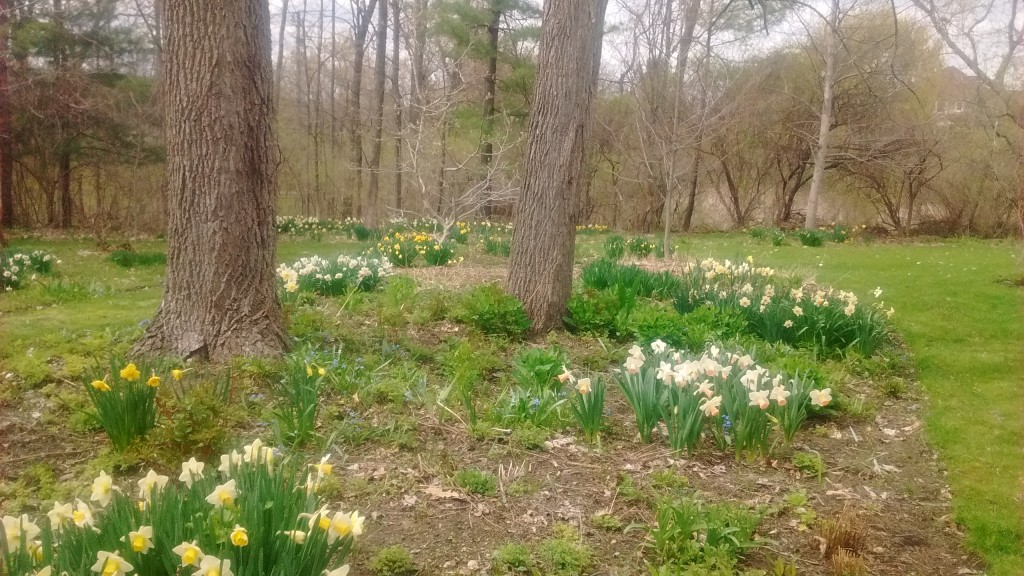If you’ve never had much luck growing peppers, you can vastly improve your pepper yield by doing a bit of extra work now before the plants go into the garden. The secret is to use plastic mulch.
In the past I’ve experimented with several colors of plastic mulch: clear, black, red, blue and silver. All of them showed a huge improvement over organic mulch or no mulch at all.
Using plastic mulch is not a new concept, it’s been around for decades. Commercial farmers and researches have improved yields even more than double.
There are several reasons why plastic mulch works so well. The most obvious is reduced weed competition. Plastic mulch prevents nearly all weeds from growing by blocking sunlight to the soil. The only weeds that you have to contend with are those that sneak up through the hole made in the plastic for planting. The exception is clear plastic mulch. It lets sunlight through allowing weeds to thrive under the greenhouse-like conditions.
Whenever you hoe or till around plants, no matter how careful you are, valuable surface roots get cut. Since plastic mulch keeps weeds from growing, there is no need for hoeing or cultivating except in pathways between the rows of mulch.
Soil temperatures are warmer under plastic mulch which is important in a relatively cool environment like Michigan. Peppers are warm season crops that respond well to warm soil temperatures. Organic mulches on the other hand, tend to keep soil temperatures cool.
Oxygen is critical for plant roots. Garden soil under plastic stays loose, leaving space between soil particles so that air can move. This creates a better environment for plant roots and soil microbes to do their job.
Bare garden soil loses a lot of water through simple evaporation. Plastic mulch keeps the soil from drying out allowing more water for the plants to use when they need it.
Some plant diseases are spread by rain or irrigation water splashing soil up onto the plant. Plastic mulch keeps plants clean and less susceptible to disease infections.
Carbon dioxide is produced in the soil and is a normal part of the soil dynamic. On bare soil it diffuses directly into the air. Since gases can’t pass through plastic mulch, carbon dioxide tends to collect in very high concentrations underneath the plastic sheet. It can only escape by moving through the planting holes resulting in very high levels of C02 right at plant level where the plant can efficiently use it for increased photosynthesis producing higher yields.
Black is the default color of plastic I use in my garden. Mainly because you can find it just about anywhere, although I’m seeing more red plastic around lately. Also, black plastic is available in heavier grades than the colors allowing you to use it for more than one season if you want. I never use clear because of the weed problem I mentioned earlier.
Lay your plastic before planting, it will be much easier to transplant through holes in the plastic. I had an assistant years ago that transplanted the plants first and then tried to install the plastic. He got it to work but it was a chore.
It’s important that the surface of the planting bed is smooth and flat, sloping slightly so rain water can run off. Rake out all debris and don’t step in the prepared soil.
Farmers use special machines to lay plastic in their fields but we don’t need anything like that in a home garden. I just stretch a string where I want the edge of the bed to be and dig a trench. I unroll the plastic and bury one edge with soil. Then I measure the width I need for the second trench — allowing for covering the opposite edge — stretch the string again and dig my second trench. A 48 inch wide roll gives me a planting bed just over three feet wide.
I cut an “X” through the plastic where I want the plants to go and transplant through the cut.
It takes some time to properly prepare the bed and install the plastic but you will be amazed by the results.
Bob




